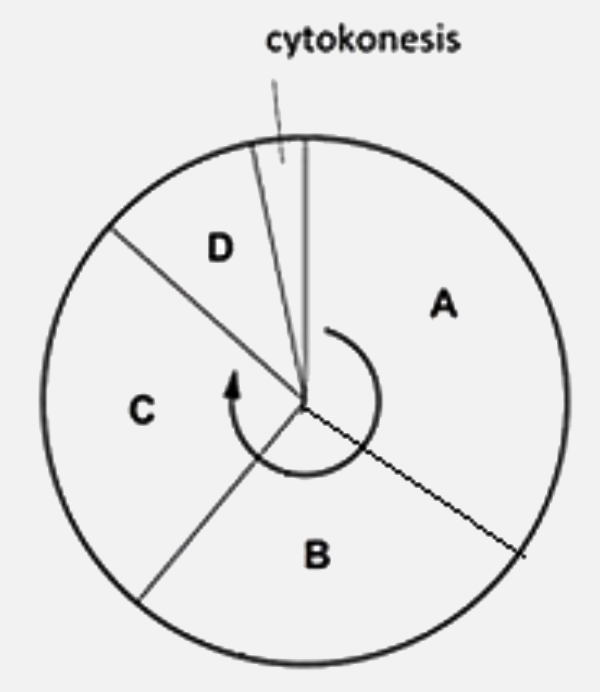During cell cycle, every chromosome contains two DNA molecules from
G1-subphase to Anaphase
G2-subphase to Anaphase
S-subphase to Metaphase
S-subphase to Anaphase
The correct Answer is:C
Step-by-Step Solution:
1. Understanding the Cell Cycle Phases: The cell cycle consists of several phases: G1, S, G2, and M (mitosis). Each phase has specific functions and characteristics.
2. Identifying DNA Replication: During the S phase (Synthesis phase), DNA replication occurs. Each chromosome is duplicated, resulting in two identical DNA molecules (sister chromatids) for each chromosome.
3. Analyzing the G1 Phase: In the G1 phase (Gap 1), the cell grows and prepares for DNA synthesis. However, no DNA replication occurs in this phase, so each chromosome contains only one DNA molecule.
4. Examining the G2 Phase: In the G2 phase (Gap 2), the cell continues to grow and prepares for mitosis. By this phase, DNA replication has already occurred during the S phase, so each chromosome now consists of two DNA molecules (sister chromatids).
5. Considering the M Phase: During the M phase (Mitosis), the sister chromatids are separated into two daughter cells. However, the question asks about the presence of two DNA molecules before this separation occurs.
6. Conclusion: The only time during the cell cycle when every chromosome contains two DNA molecules is during the G2 phase, after DNA replication has occurred in the S phase and before the chromatids are separated in the M phase.
Final Answer:
During the cell cycle, every chromosome contains two DNA molecules from the G2 subphase to anaphase.
---
During the cell cycle, every chromosome contains two DNA molecules from the G2 subphase to anaphase.
Topper's Solved these Questions
- CELL CYCLE AND CELL DIVISIONBOOK - AAKASH SERIESCHAPTER - CELL CYCLE AND CELL DIVISIONEXERCISE - Exercise-III
18 Videos
- CELL CYCLE AND CELL DIVISIONBOOK - AAKASH SERIESCHAPTER - CELL CYCLE AND CELL DIVISIONEXERCISE - Exercise-III
18 Videos
- BIOMOLECULESBOOK - AAKASH SERIESCHAPTER - BIOMOLECULESEXERCISE - EXERCISE - III (Previous AIPMT/NEET Questions) (Enzymes)
11 Videos
- ECOSYSTEMBOOK - AAKASH SERIESCHAPTER - ECOSYSTEMEXERCISE - EXERCISE-III (PREVIOUS AIPMT/NEET QUESTIONS)
37 Videos
Similar Questions
Knowledge Check
During cell division, chromosome attaches with spindles at:
AkinetochoreBcentromereCcentrioleDsecopdary constrictionIn cell cycle, DNA replication occurs during
AG1 phaseBG2 phaseCmetaphaseDS phase
During cell cycle, two molecules of DNA are present in chromosome during
View SolutionAre the two strands of DNA molecule identical?
View SolutionThe following statements describe events during the mitotic cell cycle. What is the correct of these events in the mitotic cell cycle ?
I. chromosomes migrated to opposite poles of the spindle.
II. Chromosomes arrange themselves at the equator of the spindle.
III. Chromosomes condense and the number membrane disappears .
IV. Centromeres divide.
View SolutionDuring cell cycle in which phase normal components of cell are synthesized, and assembled?
View SolutionName the event during cell divison cycle that results in the gain or loss of chromosome.
View SolutionThe diagram shows the cell cycle. During which phase do chromosomes condense and become visible ?

View Solution
